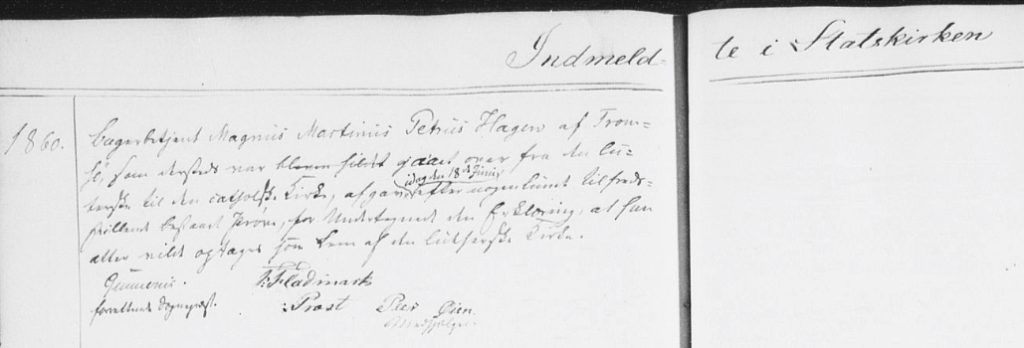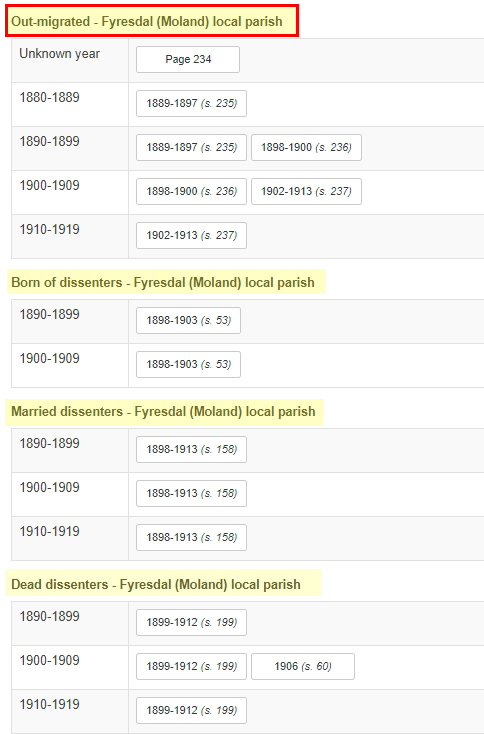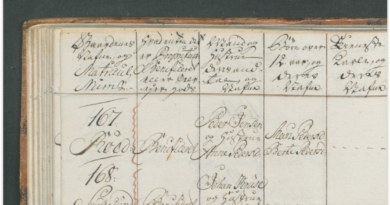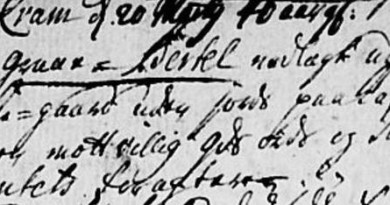Religious dissidents in Norway
Here is a look at those who did not belong to the Norwegian state church
Dissident: disagreeing especially with an established religious or political system, organization, or belief (Merriam-Webster Dict.)
We often think of Norway in the 1800’s as a homogeneous society. In many ways it was, but when it comes to religion, the Lutheran State Church was beginning to show cracks. I will start this article by listing some very brief facts.
King Kristian V’s Norwegian law from 1687 defined the Evangelical-Lutheran religion as the union Denmark-Norway’s official religion. The Norwegian constitution that was signed May 17. 1814, confirmed this and stated that the church was a state church, subject to and supported by the Norwegian government, with the king as its supreme leader (Wikipedia).
“The so-called “konventikkelplakaten” was a law issued by king Kristian VI in 1741 that prohibited religious gatherings and the activity of lay preachers without permission of or presence of the parish minister. This law was established to fight the growing influence of the Herrnhutter movement. This movement came to Norway in the 1730’s (Wisløff 1949, 7).
In the year 1797 the Norwegian lay preacher Hans Nielsen Hauge began publishing religious books and travel around preaching the gospel (Molland:52). Hauge’s activities led to a christian revival in Norway and by the year 1804 he had followers in nearly all parts of Norway (Molland 1979, 3). This group was called Haugianerne.
During the Napoleonic wars, many Norwegian sailors ended up in prison in England. Here they were introduced to the Religious Society of Friends (Quakers)((Kvekersamfunnet). The first congregation was established in Norway in 1818 (Wikipedia).
The Norwegian government decided to do away with the law about religious gatherings (“konventikkelplakaten”) in 1842 (Wikipedia)
After the Lutheran reformation in 1537, the Catholic Church was not permitted to work in Norway. In 1843 it was given permission to establish a congregation in Oslo (Wikipedia).
Finally in 1845, the “law about dissenters” were put in place, allowing Christian churches to establish in Norway. (Bjerkås 1997, 55) From now on there was a small, but increasing number of people who chose to stay outside the State Church.
I must note that The Church of the latter-day saints is today considered to be a Christian church.
The law about dissenters was amended in 1891 giving non-Christian churches, such as the Jews, and the Mormons the same rights (Mykland 1997, 11).
The law required the congregations outside the state church to register with the authorities and to keep records of their members. Birth marriages and deaths should be recorded and reported to the state church minister in the parish (Dissenterloven 1845).
This new law meant that the ministers had to record the events regarding the dissidents in separate sections of the church book. Prior to 1877 we find these records with handwritten headings on blank pages in the church books or a separate page of the preprinted forms where the minister clearly notes that this/these page(s) records dissidents.


The new sections in the church records that the law about dissenters required were:
- Indmeldte i Statskirken – People joining the State Church
- Utmeldte af Statskirken – People leaving the State Church
- Barn født af dissentere – Children born by dissenters
- Døde Dissentere – Deceased dissenters
- Ægteviede dissentere – Wedded dissenters

At the church book revision in 1877 the sections in the church books were pretty much the same as from the earlier revisions. Two preprinted sections were added: “Indmeldte i Statskirken – People joining the State Church” and “Utmeldte af Statskirken – People leaving the State Church”. The text of the Royal decree stated that information regarding births, deaths, and weddings of dissidents was to be recorded on the last pages of each appropriate section in the state church’s records. In places with a large number of people outside the state church, separate books were introduced as the minister saw fit (Digitalarkivet, webpage).

Here is the content page of a church book showing the “dissident sections”
I have put a red ring around “Out-migrated” as in the Digital Archives this translation for some are used for some parishes both for the section “Utflyttede” meaning those who moved away from the parish, and the section “Utmeldte av Statskirken”, meaning those who left the state church (and, in most cases stayed within the parish).
Fortunately, the link brings us to the correct page, but we must keep this in mind when searching the records.
The Digitalarkivet tells me today that it is the intention to use “Leavers” about those who left the state church. This change is about to get implemented.
The heading on the church book content page for those who join the state church is “Joiners”.
Many of us know if our ancestors were dissenters. In that case, these are the sections to search. One thing to note, though is that people leaving the state church as adults, should be listed in the ordinary sections for baptism, confirmation and even weddings.
Clerical actions taking place among dissenters were not always reported to the Lutheran minister as it was supposed to be. This means that, unless the denomination in question kept their own records, it can be hard to trace dissenters in church records. (Only a few records from churches outside the Lutheran State Church exist (Bjerkås 1997:56).
In my next post about dissenters, I will look into where we can find information if the records from the state church don’t give answers.
Sources:
Books:
Bjerkås, Ola. 1997. Preste- og prostearkiver. Oslo, Riksantikvarens skriftserie
Molland, Einar. 1979. Norges kirkehistorie i det 19. århundre 1. Oslo, Gyldendal Norsk Forlag A/S
Mykland, Liv. 1997. Fri religionsutøvelse gjennom 150 år. Oslo, Riksantikvarens skriftserie
Wisløff, Fredrik. 1949. Den haugianske linje. Oslo, Lutherstiftelsens forlag.
Websites:
Arkivverket: Kirkebokføring. Kirkebøkenes historie og funksjon. Published 31.3.2017 revised 16.5.2017
https://www.arkivverket.no/slektsgranskning/kirkebokforing (Accessed 09.09.2018)
Dissenterloven 1845. Oversikt over innholdet i dissenterloven 1845 Kirkehistorisk arkiv ved Norsk Lærerakademi.
http://www.fagsider.org/kirkehistorie/lover/1845_dissenterloven.htm (Accessed 09.09.2018)






Excellent start to a needed explanation of dissenters. Do you know what kind of records were kept by the Mormons of their followers leaving Norway?
Hello Eric
Thanks for visiting and for taking the time to comment. I am working on a little something about Mormons leaving Norway so be sure to subscribe and I will hopefully have it ready in not too long.
I’m looking forward to your next post about dissenters. I have ancestors from Målselv who joined the Free Apostolic Church, and later the Troms Quakers. H.E. Aarek did some nice work on the Troms Quakers and their settlement around Lake Lillian (Kandiyohi), Minnesota, USA – “A Short History of the Troms Quakers And their Emigration to America.” Mine went to St. Croix, Wisconsin, apparently a popular destination for folk from Målselv.
Hello Zoe
Great to hear from you. I have another article about dissidents. You find it at https://martinroe.com/blog/index.php/2018/09/20/religious-dissidents-in-the-censuses/
Martin